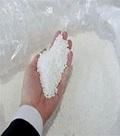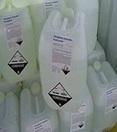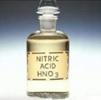- europages
- >
- COMPANIES - SUPPLIERS - SERVICE PROVIDERS
- >
- chemical fertilizers
Results for
Chemical fertilizers - Import export

JADAM
Portugal
Urea is an organic compound with chemical formula CO(NH2)2 Urea serves an important role in the metabolism of nitrogen-containing compounds by animals and is the main nitrogen-containing substance in the urine of mammals Applications: Agriculture Urea is used as a nitrogen-release fertilizer it has the highest nitrogen content (46% N) of all solid nitrogenous fertilizers in common use Urea is a raw material for the manufacture of urea-formaldehyde resins, used mainly in wood-based panels such as particleboard Explosives Urea can be used to make urea nitrate, a high explosive that is used industrially and as part of some improvised explosive devices Automobile systems Urea is used to reduce the NOx pollutants in exhaust gases from combustion from diesel, dual fuel, and lean-burn natural gas engines properties: Molar mass 60.06 g/mol Density,1.32 g/cm3 Melting point 133-135 °C Solubility in water 545 g/L @25°C / pH 9,2 - 9,5 CAS number,57-13-6 WE number,200-315-5
Request for a quote
JADAM
Portugal
Phosphate rock is a crucial raw material used in the production of fertilizers It occurs in two primary geological forms: sedimentary and igneous Phosphate Rock Composition: Phosphorus (P) is the primary nutrient in phosphate rock and is crucial for plant growth and development It is typically reported as phosphorus pentoxide (P2O5) The phosphorus content in phosphate rock can range from 25% to 31% equivalent to 62-67.5 BPL% Calcium (Ca) is another essential element found in rock phosphate It plays a vital role in plant cell structure, root development, and nutrient uptake, it can range from 30% to 50% Carbonates (CO3) are common impurities found in phosphate rock, typically exist in the form of calcium carbonate (CaCO3) or magnesium carbonate (MgCO3) Silicates (SiO2) are another impurity often present in phosphate rock They can have positive effects on soil structure, water-holding capacity, and nutrient retention, it can range from a few percent to over 20%
Request for a quote
JADAM
Portugal
Phosphoric acid (orthophosphoric acid, monophosphoric acid) is a colorless, odorless phosphorus-containing solid, and inorganic compound with the chemical formula H3PO4 It is commonly encountered as an 85% aqueous solution, which is a colourless, odourless, and non-volatile syrupy liquid, it is a major industrial chemical, being a component of many fertilizers. Applications: in anti-rust treatment by phosphate conversion coating, iron oxidation prevention by Parkerization process, in phosphoric acid fuel cells in activated carbon production, pH adjuster in cosmetics and skin-care Industries: Household chemicals, Fertilizers, Adhesives, oils, greases, Horticulture, Food industry, Feed industry Properties: CAS number 7664-38-2 WE number 231-633-2 Chemical formula H3PO4 Molar mass 97,995 g/mol Customs tariff code 28092000 ADR UN1805 pH <1 Melting / freezing point - 17°C Boiling point 135°C Relative density 1,5788 g/cm3 @15°C Solubility in water >1000 g/l @20°C
Request for a quote
JADAM
Portugal
Sulfuric Acid 98% (H2S04) known in antiquity as oil of vitriol, is a mineral acid composed of the elements sulfur, oxygen, and hydrogen, with the molecular formula H2SO4 It is a colorless, odorless, and viscous liquid that is miscible with water Pure sulfuric acid does not occur naturally due to its strong affinity to water vapor; it is hygroscopic and readily absorbs water vapor from the air Concentrated sulfuric acid is highly corrosive towards other materials, from rocks to metals, it is an oxidant with powerful dehydrating properties Industries: Household chemicals, Fertilizers, Adhesives, oils, greases, Horticulture, Batteries Properties: CAS number 7664-93-9 WE number 231-639-5 Chemical formula H2SO4 Molar mass 98,08 g/mol Customs tariff code 28070000 ADR UN 1830, 8, II pH 0,3 (49 g H2S04/1000 ml H2O @25°C) Melting / freezing point +1,8°C (98.5 %), -12.6°C (96 %), -27°C (93 %) Boiling point range + 275°C ± 5°C (100%) Relative density 1,8144-1,8305 kg/l (90-100%)
Request for a quote
JADAM
Portugal
Acetic Acid 50%, 80% and 99% systematically named ethanoic acid, is an acidic, colourless liquid, organic compound with the chemical formula (CH3COOH) Vinegar is at least 4% acetic acid by volume, making acetic acid the main component of vinegar apart from water and trace elements It is an important chemical reagent, used primarily in the production of cellulose acetate for photographic film, polyvinyl acetate for wood glue, and synthetic fibres and fabrics In households, diluted acetic acid is often used in descaling agents In the food industry, it used as an acidity regulator and as a condiment Industries: Household chemicals, Fertilizers Properties: CAS number 64-19-7 WE number 200-580-7 Chemical formula CH3COOH Molar mass 60,05 g/mol Customs tariff code 29152100 ADR UN2789 pH <1 Melting / freezing point -20°C (1013 hPa) Boiling point range 92°C (1013hPa) Relative density 1,057 g/cm3 @25°C Solubility in water 602,9 g/l/ @25°C
Request for a quoteDo you sell or make similar products?
Sign up to europages and have your products listed

JADAM
Portugal
Formaldehyde is a colorless, strong-smelling, flammable organic chemical with chemical formula CH2O it is produced industrially and used in building materials such as particleboard, plywood, and other pressed-wood products also it is used as a fungicide, germicide, and disinfectant, and as a preservative in mortuaries and medical laboratories It is produced naturally during the decay of plant material in the soil and during normal chemical processes in most living organisms, it is also a combustion product found in tobacco smoke. Industries: Household chemicals, fertilizers, adhesives, oils, greases, horticulture, feed industry, plastic industry, resins and textile industry Properties: CAS number 50-00-0 (36-50%) WE number 200-001-8 (36-50%) Index number 605-001-00-5 (35-50%) Chemical formula CH2O Customs tariff code 29121100 ADR UN2209 pH 3-4 Melting / freezing point ~100°C Boiling point / range 64–85°C Relative density 1,090–1,150 g/cm3 @20°C
Request for a quote
JADAM
Portugal
Nitric acid (HNO₃) is a colorless liquid with yellow or red fumes due to decomposition into oxides of nitrogen It is a highly corrosive mineral acid with an acrid odor most commercially available nitric acid has a concentration of 68% in water, when the solution contains more than 86% HNO3, it is referred to as fuming nitric acid Industries: Household chemicals, Fertilizers, Adhesives, oils, greases, Horticulture Precursor to organic nitrogen compounds Use as an oxidant in nylon industry Metal processing,Woodworking ,Etchant and cleaning agent Properties: CAS number 7697-37-2 WE number 231-714-2 Chemical formula HNO3 Molar mass 63,01 g/mol Customs tariff code 28080000 ADR UN2031 pH <1 Melting / freezing point -18°C (1013 hPa) Boiling point / range 117°C (1013 hPa) Relative density 1,31 g/cm3 @20°C Solubility in water 500 g/l @20°C
Request for a quote
JADAM
Portugal
Glycerine is a colorless, odorless, clear, viscous liquid that is sweet-tasting and non-toxic it is a natural compound derived from vegetable oils or animal fats Chemical name is Glycerol with chemical formula C3H5(OH)3 Industries: Paints and varnishes, Household chemicals, Fertilizers, Cosmetic industry, Adhesives, oils, greases, Horticulture, Pharmaceutical industry, Food industry, Feed industry, Resins, plastics, polyurethanes Uses: Humectant, solvent, and sweetener, and may help preserve foods Filler in commercially prepared low-fat foods Thickening agent in beverages Medical and personal care Botanical extracts Electronic cigarette liquid Antifreeze Chemical intermediate Vibration damping Properties: CAS number 56-81-5 WE number 200-289-5 Chemical formula C3H8O3 Molar mass 92,1 g/mol Customs tariff code 29054500 pH 5-7 Melting / freezing point -10°C Boiling point range 100-130°C Relative density ~1200 kg/m3 @15°C
Request for a quote
JADAM
Portugal
Hydrogen peroxide 30%,50% ,60% Hydrogen Peroxide (H₂O₂) is a colorless liquid with a slightly sharp odor it is used as a bleach for textiles and paper, as a component of rocket fuels, and for producing foam rubber and organic chemicals, it is also used in medicinal applications and to bleach clothes and hair. Industries: Household chemicals, Fertilizers, Cosmetic industry, Horticulture, Pharmaceutical industry, Food industry Uses: Bleaching,Production of organic peroxy compounds,Production of inorganic peroxides Sewage treatment,Disinfectant,Propellant Properties: CAS number 7722-84-1 WE number 231-765-0 Chemical formula H2O2 Molar mass 34,01 g/mol Customs tariff code 28470000 ADR UN2014 pH 1,5 – 4 Melting / freezing point - 33°C (35%), -51°C (50%), -56°C (60%) Boiling point 108°C (35%), 114°C (50%), 119°c (60%) Relative density 1,07 g/cm3 (35%), 1,195 (50%), 1,241 (60%)
Request for a quoteResults for
Chemical fertilizers - Import exportNumber of results
10 ProductsCountries
Company type